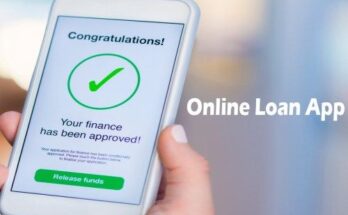Student Loan Forgiveness Application: In today’s economy, managing student debt is a significant challenge for many graduates. The Student Loan Forgiveness Application process offers a beacon of hope.
This comprehensive guide aims to demystify the process, providing crucial information to help borrowers navigate their way towards financial relief.
Understanding Student Loan Forgiveness
Student loan forgiveness refers to the process where a part or all of a student’s educational debt is waived off. This relief comes in various forms and is usually offered by governments or private organizations as a means to support graduates struggling to repay their loans. The core idea is to provide financial relief to individuals who have invested in their education but face difficulties in managing the accumulated debt.
Types of Student Loan Forgiveness Programs
There are several types of student loan forgiveness programs, each with its unique features and benefits.
Federal Programs: The most common type, offered by the government. Examples include Public Service Loan Forgiveness (PSLF), Teacher Loan Forgiveness, and Income-Driven Repayment Plan Forgiveness.
State-Sponsored Programs: These are offered by individual states and typically target professionals in specific fields like healthcare or education.
Private Loan Forgiveness: Though less common, some private lenders offer forgiveness programs, often as part of their corporate social responsibility initiatives.
Eligibility Criteria for Loan Forgiveness
The eligibility for student loan forgiveness varies depending on the program. Generally, factors include:
Type of Loan: Federal programs typically only apply to federal student loans, not private loans.
Employment Requirements: Many programs require the borrower to work in specific sectors or job roles for a certain period.
Repayment History: A consistent history of timely loan repayments is often a prerequisite.
Income Level: Some programs are designed to assist borrowers with lower income levels.
However, student loan forgiveness can offer significant financial relief, but understanding the types of programs available and their specific eligibility criteria is crucial for borrowers seeking this form of assistance.
The Student Loan Forgiveness Application Process: A Comprehensive Guide
Navigating the student loan forgiveness application process can often seem daunting. However, by breaking it down into manageable steps, you can approach this process with confidence. This guide aims to provide clarity and ease your journey towards potentially reducing or eliminating your student loan debt.
Step-by-Step Guide to Completing a Student Loan Forgiveness Application
Understand Eligibility: Before anything else, determine your eligibility for loan forgiveness. Different programs have specific requirements based on factors like your occupation, loan type, and repayment history.
Choose the Right Forgiveness Program: There are various loan forgiveness programs available, such as Public Service Loan Forgiveness (PSLF) and Teacher Loan Forgiveness. Research and select the one that aligns best with your qualifications and career path.
Gather Necessary Documentation: Prepare documents like your employment certification, proof of income, and loan statements. These documents are crucial as they validate your eligibility and employment history.
Complete the Application Form: Fill out the application form with accuracy. Ensure that all personal information, employment details, and loan information are up-to-date and correctly entered.
Submit Your Application: Once you’ve completed the form and compiled all necessary documents, submit your application according to the guidelines of the forgiveness program you’ve chosen.
Common Requirements and Documents Needed
Employment Certification Forms: Needed for programs like PSLF, these forms verify your employment in a qualifying organization.
Income Verification: This may include tax returns or pay stubs to demonstrate your income level.
Loan Information: Details about your student loans, such as loan type and repayment history, are essential.
Online vs. Paper Application Processes
Online Application: Many forgiveness programs offer an online application portal. This method is generally faster and allows for easier tracking of your application status.
Paper Application: Some applicants may prefer or need to submit a paper application. This method requires mailing the application and supporting documents to the specified address.
By understanding and methodically following these steps, you can effectively navigate the student loan forgiveness application process. Remember, thorough research and meticulous documentation are key to a successful application.
Tips for a Successful Student Loan Forgiveness Application
Navigating the complexities of student loan forgiveness can be daunting, but with the right approach, you can maximize your chances of success. Here’s a guide to help you through the process.
Best Practices for Filling Out the Application
Gather All Necessary Documents: Before you start, make sure you have all required documents. This typically includes proof of income, employment verification, and any relevant loan statements.
Read Instructions Carefully: Each forgiveness program has specific requirements. Read all instructions thoroughly to ensure you understand what is needed.
Be Accurate and Consistent: Double-check your information for accuracy. Inconsistencies can lead to delays or rejection.
Use Clear and Concise Language: Avoid jargon or overly complex language. Your goal is to communicate information as clearly and straightforwardly as possible.
Avoiding Common Mistakes
Missing Deadlines: Keep track of all important deadlines. Submitting your application late can disqualify you from forgiveness.
Overlooking Eligibility Requirements: Ensure you meet all the eligibility criteria for the specific forgiveness program. Applying for a program you’re not eligible for is a common mistake.
Incomplete Forms: Fill out every required field. Leaving sections blank can lead to processing delays or outright rejection.
How to Ensure Your Application Stands Out
Provide Detailed Supporting Documents: The more evidence you provide to support your application, the stronger it will be. This can include detailed records of payments and any correspondence related to your student loans.
Follow Up: After submitting your application, don’t hesitate to follow up. This shows your commitment and keeps your application on the radar.
Seek Advice from Experts: Consider consulting with a financial advisor or someone who has successfully navigated the process. Their insights can provide valuable guidance.
However, a successful student loan forgiveness application requires careful preparation, attention to detail, and a proactive approach. By following these tips, you can enhance your chances of having your student loans forgiven. Remember, this is a journey that requires patience and persistence, but with the right strategy, it’s a journey that can lead to significant financial relief.
Navigating Challenges in the Student Loan Forgiveness Application Process
Applying for student loan forgiveness can be a complex and sometimes daunting task. It’s crucial to understand the potential hurdles you might face and how to effectively navigate through them. This guide aims to shed light on common issues and provide practical solutions to help you successfully manage your student loan forgiveness application.
Addressing Potential Issues and Delays
Stay Informed: Always keep up-to-date with the latest guidelines and requirements for loan forgiveness programs. This proactive approach can help you avoid common pitfalls.
Organize Documentation: Ensure all your documents are in order. Inaccuracies or missing information can lead to delays. Keeping a well-organized record helps in tracking your application’s progress.
Follow Up Regularly: Don’t hesitate to follow up with your loan servicer. Regular communication can help you stay on top of any additional requirements or updates regarding your application.
What to Do If Your Application Is Initially Rejected
Understand the Reason: Carefully review the rejection notice to understand why your application was denied. It could be due to incomplete information, eligibility issues, or other reasons.
Rectify and Resubmit: Once you identify the issue, take the necessary steps to rectify it. This might involve gathering additional documentation or clarifying existing information.
Appeal if Necessary: If you believe your application was wrongly rejected, consider filing an appeal. Make sure to provide any additional evidence that supports your case.
Seeking Assistance from Financial Advisors or Student Loan Counselors
Professional Guidance: Financial advisors or student loan counselors can offer valuable insights and guidance tailored to your specific situation.
Understanding Complex Terms: These professionals can help decipher complex terms and conditions, ensuring you make informed decisions.
Strategic Planning: They can assist in creating a strategic plan to manage your loans effectively, possibly reducing the chances of future complications.
Remember, patience and persistence are key in navigating the student loan forgiveness application process. By staying informed, organized, and seeking professional assistance when needed, you can increase your chances of a successful application.
Understanding the Impact of Loan Forgiveness
Understanding the impact of loan forgiveness is crucial for anyone looking to improve their financial health. In this section, we will explore the long-term financial benefits of loan forgiveness and how it can impact your credit and future financial opportunities.
Long-Term Financial Benefits of Loan Forgiveness
Loan forgiveness can provide substantial relief for individuals burdened by debt. When a loan is forgiven, you are no longer required to pay the remaining balance, which can lead to several long-term financial benefits:
Reduced Debt Burden: The most immediate effect of loan forgiveness is the reduction or elimination of debt. This reduction can significantly lower your debt-to-income ratio, making it easier to manage your finances and save for the future.
Increased Savings Potential: With less debt to pay off, you can redirect your financial resources towards savings or investments. This can enhance your ability to build a robust financial portfolio over time.
Improved Budget Management: Loan forgiveness can free up monthly budget space, allowing for better financial planning and allocation of resources to other essential expenses or investment opportunities.
Long-Term Wealth Accumulation: The savings from loan forgiveness can be invested in retirement accounts, stocks, or other wealth-building tools, contributing to greater financial stability in the long run.
Impact on Credit and Future Financial Opportunities
The effect of loan forgiveness on credit scores and future financial opportunities is multifaceted:
Credit Score Impact: Initially, loan forgiveness may cause a temporary dip in your credit score. However, as your debt-to-income ratio improves and you continue to make timely payments on other debts, your credit score can recover and potentially improve over time.
Enhanced Borrowing Potential: A lower debt-to-income ratio and improved credit health can make you more attractive to lenders. This can open doors to better loan terms and interest rates in the future, whether for mortgages, car loans, or personal loans.
Financial Flexibility: With less debt, you have more financial flexibility. This can include the ability to pursue career changes, entrepreneurial ventures, or education without the heavy burden of debt influencing your decisions.
Caution on Future Debts: It’s essential to approach future debts cautiously. While loan forgiveness can provide a fresh start, maintaining financial discipline is key to avoiding the pitfalls of accumulating new, burdensome debts.
However, loan forgiveness can be a powerful tool for financial liberation. It offers long-term financial benefits, improves credit health, and opens up new financial opportunities. However, it’s crucial to continue practicing sound financial management to maintain and build upon these benefits.
Staying Informed: Changes and Updates in Loan Forgiveness Programs
With frequent policy updates and changes, it’s essential for borrowers to have access to the latest information. This guide provides strategies and resources to keep you updated on student loan forgiveness programs, ensuring you don’t miss out on any opportunities.
Keeping Up-to-Date with Policy Changes
Government Websites: Regularly visit official government websites related to education and finance. These are often the first sources to release updates on loan forgiveness policies.
Newsletters and Alerts: Sign up for newsletters from reliable financial news sources. Set up alerts for keywords like “student loan forgiveness updates” to receive timely notifications.
Social Media Follows: Follow relevant social media pages and influencers in the financial education sector. They frequently share insights and interpretations of policy changes.
Forums and Community Groups: Participate in online forums and community groups where borrowers share experiences and information about navigating loan forgiveness programs.
Resources for Staying Informed about Student Loan Forgiveness
Financial Blogs and Podcasts: Engage with popular financial blogs and podcasts that discuss student loans and forgiveness programs. They often feature experts who break down complex policies into understandable terms.
Educational Webinars and Workshops: Look out for webinars and workshops conducted by financial experts. These can provide detailed insights into the latest changes and how they affect borrowers.
Consulting with Financial Advisors: Consider occasional consultations with financial advisors who specialize in student loans. They can offer personalized advice based on the latest policy updates.
Interactive Tools and Calculators: Utilize online tools and calculators designed to help understand how changes in loan forgiveness programs might impact your specific situation.
By incorporating these strategies and resources into your routine, you can stay well-informed about the latest changes in loan forgiveness programs. This knowledge not only helps in making informed decisions but also ensures that you are well-prepared to adapt to new policies and take advantage of any new opportunities that arise.
FAQs: Understanding the Student Loan Forgiveness Application Process
1. What Is Student Loan Forgiveness?
Student loan forgiveness is a program that allows eligible borrowers to have a portion or all of their student loan debt forgiven, meaning they are no longer required to repay some or all of their loan.
2. Who Qualifies for Student Loan Forgiveness?
Eligibility criteria vary depending on the specific forgiveness program. Generally, it’s based on factors like the type of loan, your profession, repayment history, and whether you work in public service.
3. How Do I Apply for Student Loan Forgiveness?
The application process can differ based on the forgiveness program. Typically, it involves completing a specific form and providing documentation to prove your eligibility.
4. Are There Any Costs Involved in Applying?
No, applying for student loan forgiveness should be free. Beware of scams that ask for payment to assist in the application process.
5. How Long Does the Application Process Take?
The processing time varies. It can take several weeks to several months, depending on the program and your individual circumstances.
6. Can I Apply If I’m Still in School?
Generally, students currently enrolled cannot apply for forgiveness. However, there are exceptions, so it’s best to check the specific requirements of each program.
7. What Happens if My Application Is Denied?
If your application is denied, you will receive a notification explaining the reason. You can often reapply or appeal the decision, depending on the program’s policies.
8. Where Can I Get Help with My Application?
Many resources are available for assistance, including your loan servicer, educational institutions, and official government websites.
9. Does Forgiveness Affect My Credit Score?
Loan forgiveness itself doesn’t negatively impact your credit score. However, your score might be affected by your prior payment history.
10. Are Forgiven Loans Considered Taxable Income?
This depends on the forgiveness program and current tax laws. It’s advisable to consult a tax professional for guidance specific to your situation.
Conclusion
We strongly encourage everyone eligible to seize this chance. Don’t let the complexity of the process deter you. Instead, view it as a strategic step towards achieving your financial goals. This opportunity is not just about clearing debt; it’s about unlocking potential and opening doors that financial burdens may have closed.
Remember, applying for student loan forgiveness could be one of the most empowering decisions you make for your financial health. Take this step, explore your options, and potentially lighten the load of your student loan debt. Your future self will thank you for this prudent and proactive choice.


